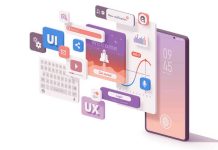Change is an inevitable occurrence for any business and successful change must be managed. As a gradual shift is seen towards AI and data-driven business models the same shift is seen in the technology or software system. The modern-day tech stack is seen as an asset that runs the business and helps in growth. This blog will guide you through how you can shift from legacy to modernization tools.
It is possible that your legacy software might have paid off in its time but it’s nearing the maturity period now. Have you given it a thought? If not, now is the time to shift to the new technology or software as we move to the digital era of science and technology in the modern age owing to mobile, social, analytics, and most importantly IoT and AI.
The shift in technology here means you need to unlock the data from the legacy software and include that in your digital transformation journey.
What is a Legacy System?
Do you remember people in the 60s who used to carry a briefcase and made ledgers of their business at night? That was when they followed the old legacy system. Now you must be wondering what actually is a legacy system. The term came into existence in the 1980s. According to Gartner, a legacy system refers to a technology based on outdated operating systems but is still reliable for day-to-day operations. A typical legacy system refers to age-old technology, infrastructure, applications, and processes.
Packed in a tight environment, with fewer chances of growth and innovation, the legacy system runs on hardware and software that used to be customer-owned, hosted, managed, and supported. Even today some of the technologies software is difficult to shift. But the bitter truth is they create a burden to manage and maintain.
Gone are the days when people maintained ledgers. Today people use new modern technology. For Example, Grab Pay and Dash for Payments have taken over legacy software.
What is legacy Modernization?

Talking about legacy modernization tools, Dan Schulman, CEO of PayPal, has said, “The biggest impediment to a company’s future success is its past success”. In the rapidly fast-changing and competitive environment businessman needs to revamp and reinvent and transform themselves with the ‘move fast and break things’ mindset. The new modern technologies need to be on the nerves of the business to be updated and up to mark to be a part of true digital transformation.
It is hard to replace some legacy software, especially the ones that handle vital business processes within an organization. therefore one sure short answer is to shift to the modern-day tech stack. It is important to note here that when a tipping point is reached, application leaders must look to application modernization to help remove the obstacles.
Disadvantages of Legacy Software

Below mentioned are some of the reasons you should consider shifting from legacy software to a modern-day tech stack.
1. Compatibility Issues
To be precise during the initial stages legacy systems may support certain data files and formats. However, the problem arises when after a certain point of time they show errors and might not work properly.
It is very obvious that legacy software cannot handle the modern technology demand. In the competitive world when the competitors use modern technology and growth is inevitably seen then it forces the businessman to rethink shifting to the new technology for the growth of the business. Those who stick to the age-old software consequently end up losing some of the major opportunities.
2. Limited Flexibility
Talking in terms of flexibility, legacy software is comparatively less flexible. Customization is the need of the hour. Everyone needs their things ready as per their requirements and demands. This is less possible using legacy software as it is less up-to-date. As a result, companies struggle to cope with the industry’s standards.
This highlights one of the biggest disadvantages of using legacy software, on the other hand, talking about modern technologies, are up to date with industry standards and are more flexible and they can easily adapt to upcoming changes or say technological advancements.
3. Functionality Issues
Functionality is the crux of any software. If the software does not function properly the whole thing may go for a toss. Reduced software functionality is a crucial legacy software disadvantage that companies may face from time to time. Sometimes it is possible that the software is not able to run or integrate some of the software programs or faces difficulties in carrying out certain tasks.
Software malfunctions can cost the company a lot of money and can incur huge losses, especially talking about big companies. Example: Case Study
4. Old Interface
User experience matters a lot when it comes to customer satisfaction. Some of the age-old software uses an old interface which is one of the disadvantages of maintaining legacy systems. which gives users a bad experience. Example: Difficulty in reading the display and difficulty in interpreting the data are examples of using an old interface.
In today’s competitive world where there is a threshold competition between each other, an outdated interface can hurt any business by derailing customers’ trust in the brand, leading to a decline in sales.
New to the design world? Our mobile app design agency can turn your imagination into a beautiful reality.
5. Security Vulnerability

For any business security of the data is of utmost importance. Many of the legacy software is prone to malware attacks from bad actors. It is possible that the data may get lost or get corrupted due to using old legacy software.
The absence of software patches and upgrades leaves the legacy system susceptible and defenseless to potent attacks. And eventually, the businessmen end up spending extra to support the system while paying for special licenses.
Therefore to protect the data securely businesses should use new up-to-date technology with which the chances of data getting lost or destroyed reduces.
Maintain or Modernize your Legacy Tools?
Now you must be wondering whether you should completely shun the old software or modernize it. This question is the crux of the discussion of this article. The sure-shot answer to this question is it all depends on the company’s objective and overall budget. In totality, every business one day or the another reaches a dilemma point where new technologies and adjustments needed to be done in the existing system.
Factors:
It is important for you to give it a thought when any of the below-mentioned factors pertains to your business.
- The software is no longer able to support your needs
- The system is not able to keep up with your business growth
- The system lacks security and patches
- Increasing technical debts
Why Shift from Legacy to Modernization Tools?
Talking about today’s scenario the pandemic has hit hard and the working model has shifted to working from home. Imagine in a situation like this, would a legacy system work? Businesses all around the world were able to pull off remote work during the pandemic only because of modern technologies and tools. Had these been absent from the present time, there would have been no hope and the world would have seen a major downfall. In a global crisis like the Covid-19, modern technology played a crucial role and helped businesses thrive. From communication to management, tools and applications were leveraged by organizations to keep the workflow going.
It is times like these that show us the value of updating and adopting technology. There are several businesses that have custom applications to automate certain processes, task delegation, and in-house communication.
Final thoughts
Are you still not sure if you need to go for legacy modernization tools? Well, this can be a tough call for any business. The key is to evaluate your business thoroughly before making a call. With that in mind, legacy modernization tools are a go-to thing.
Stating more simply, updating your software (and maybe some hardware to go with it). Today, every business strives to be updated in this competitive world. With the right attitude aligned with digital growth and the right strategy for your business, you can boost your business well in the future.
Are you planning a digital transformation of your business? Our digital product development company is here to help you.









